Table of contents
The cooking banana ( Musa × paradisiaca ) is also known as the vegetable banana, flour banana and in some places as the paradise fig or banana fig . In contrast to the well-known dessert banana, the cooking banana can only be eaten raw when it is fully ripe, i.e. when the skin is practically black everywhere.
Use in the kitchen
Can you eat plantains raw? Green or yellow plantains are not edible raw: even when the plantain is fully ripe, only a small amount of the starch they contain is converted into sugar. In addition, their flesh is not particularly tasty raw. Plantains that are green on the outside have whitish-yellow flesh that tastes mild to sour or even astringent (similar to rhubarb ) when raw. Only after cooking or other heating can the starch be broken down during the digestive process (by the enzyme amylase). 1 When cooked, the taste of a plantain is more like that of a potato or carrot, depending on its ripeness.
Depending on the ripeness of the plantains, there are different ways of preparing them. Unripe fruits are best cooked and pureed, while riper plantains are suitable for steaming, roasting, baking, grilling or deep-frying. Dried green plantains can be ground into flour and used in cakes and pastries, as well as for thickening soups and sauces.
Basically, plantains are suitable for all dishes that use potatoes. A chutney with plantains also tastes delicious. Cooked plantains thicken stews, soups or other dishes due to their high starch content. Roasted or fried, they have a more crunchy consistency. Even the (male) flower petals can be prepared as a vegetable and are particularly popular in Asia.
A popular dish in Latin American countries is patacón (tostón in Spanish), made from flat and fried pieces of plantain. Kelewele or kelawele is a popular side dish in Ghana, also made from fried and very spicy plantain slices or cubes. Aloco (also alloco or aloko) is a West African dish made from plantains fried in palm oil . One of Uganda's national dishes consists of plantains wrapped in banana leaves, which are steamed in water for several hours before being mashed into a pulp. This pulp, known as matoke, is a common side dish for meat and fish, and is eaten with a peanut sauce. In many African countries, plantains are an important staple food, along with cassava, corn and sweet potatoes . 2
How do you peel plantains? Green plantains are best peeled with a knife, as the skin is harder than that of a fruit banana. First, cut off the ends and place the plantain on a cutting board. Now cut the skin lengthways and pull it off in strips using your fingers and a knife. You can simply cut away any leftover peel. For plantains that are in the yellow ripe stage, it is enough to score them with a knife before peeling them by hand.
Vegan recipe for carrot and plantain stew
Ingredients (for 4 people): 600 g carrots, 400 g plantains (ripe), 2 onions, 1 clove of garlic, 1 piece of ginger (approx. 2 cm), 2 tablespoons oil (e.g. rapeseed oil), 400 ml vegetable stock, 3 tablespoons lemon juice, salt ,pepper, chili flakes .
Preparation: Peel the onions, garlic and ginger, chop finely and sauté in oil until translucent. Peel the carrots, cut into slices and add. Pour in the vegetable stock and bring to the boil. Peel the plantains, cut into slices about 2 cm thick and add to the saucepan. Cover and simmer everything over a low heat for about 20-25 minutes. When the vegetables are soft, simmer them uncovered until the liquid has evaporated. Take the pan off the stove and roughly chop the vegetables with a vegetable masher. Season to taste with salt, pepper, lemon juice and possibly chili flakes.
Vegan recipe for patacones with black beans
Ingredients: 4 plantains (green), 60 ml rapeseed oil ; for the toppings: 2 avocados, 240 g (cooked)black beans, 60 g coriander leaves .
Preparation: Peel the plantains and cut into 2.5 cm pieces. Drizzle the plantains with oil and sprinkle with a pinch of salt if necessary. Bake in the oven at 200 °C for about 20-25 minutes. Once cooled, shape the plantains into patacones using a heavy object or a baking press. Add toppings as desired.
Vegan recipes with plantains can be found under the note: " Recipes that have the most of this ingredient ".
| Not only vegans or vegetarians should read this: Vegans often eat unhealthily. Avoidable nutritional mistakes . |
Purchasing - Storage
Plantains are available from selected wholesalers such as Coop , Migros , Edeka , Rewe , Billa and Spar . Organic supermarkets ( Alnatura and Denn's Biomarkt ), Asian shops, delicatessens and gourmet shops also often sell them. Denner , Volg , Aldi , Lidl and Hofer rarely stock vegetable bananas. Although plantains are available all year round, the import of banana blossoms is irregular during the summer. It is best to ask a specialist retailer for fresh, exotic foods.
Their external appearance ranges from small to large (30-40 cm) and from angular to pointed. Unripe plantains are green and turn creamy yellow to black as they ripen. They are usually available individually, as "single fingers". When buying a plantain, it should be plump, although an unsightly, brown to black skin is not an indication of poor quality.
The availability of plantains varies depending on the size of the store, catchment area, etc. Our recorded food prices for the DA-CH countries can be found above under the ingredient image - and by clicking on them you can see their development at different suppliers.
Storage tips
At room temperature, plantains ripen on their own in eight to ten days, while higher temperatures accelerate the ripening process. Stored at 7 to 13 °C, they can be kept for up to three weeks. Even when ripe, the skin of the plantain often remains green or turns creamy yellow to black in spots. Fully ripe plantains can be peeled and individually wrapped and stored in the freezer.
Ingredients - Nutritional values - Calories
Raw plantains contain around 122 kcal/100g and are very low in fat and protein. Around a quarter of the carbohydrates (32 g/100g) consist of starch, which is largely not converted into sugar even when ripe. 1 The composition of the ingredients changes when cooked.
Potassium is well represented in raw plantains with 499 mg/100g. Avocados (485 mg) and breadfruit (490 mg/100g) have very similar potassium values. Very good sources of the essential element are herbs such as dried parsley (2683 mg/100g), legumes ( white beans : 1795 mg/100g) and nuts ( almonds : 733 mg/100g). This alkali metal is an important intracellular ion (K+) and is responsible for the osmotic pressure in every cell. 4
Plantains contain around 18 mg of vitamin C per 100 g when raw and around 10 mg when cooked. Spring onions and zucchini have similarly low levels as raw plantains. Yellow bell peppers contain ten times the amount of the water-soluble vitamin (184 mg/100g). Ascorbic acid, as this important antioxidant is also called, performs very important tasks in the human immune system. 4
The B vitamin pyridoxine (vitamin B6 ) accounts for approximately 21% of the daily requirement at 0.3 mg/100g. This is comparable to the dessert banana with 0.37 mg/100g and peanuts with 0.35 mg/100g. Very good sources of the water-soluble B vitamin are nuts and whole grains or pseudo grains, such as sunflower seeds (1.3 mg/100g) or wheat germ (1.3 mg/100g). Pyridoxine is involved in many enzymatic reactions and in protein metabolism. 4
Folate, the folic acid equivalent, is also found in plantains at 22 µg/100g, just like in eggplants or pecans . Pulses are very good sources: cooked mung beans provide around 159 µg/100g, cooked lentils 181 µg/100g. 4 It is particularly important to have an adequate supply of this B vitamin during pregnancy (and before!). It is therefore recommended to take 600 µg daily during pregnancy. Adolescents and adults should take in around 400 µg daily through their diet. 5 The water-soluble vitamin folic acid is necessary for cell renewal.
The complete ingredients of plantains, the coverage of the daily requirement and comparison values with other ingredients can be found in our nutrient tables. In the article Nutrients explained you will get a detailed insight into the topic.
Effects on health
How healthy is a plantain? Fully ripe raw plantains contain a significantly higher proportion of indigestible, resistant starch than cooked, unripe plantains. Since the small intestine cannot digest and absorb resistant starch or can only partially digest it, bacteria ferment the fiber in the large intestine and thus promote healthy intestinal flora. They protect the intestinal wall from cell changes and support its barrier function. In addition, it seems that the unripe, cooked plantain is the best in terms of glycemic index, since blood sugar only rises slowly. 6
As mentioned in the above paragraph, the resistant starch contained in plantains regulates blood sugar. This is why plantains are also tolerable for diabetics in small quantities. The glycemic index of raw plantains is rather low at around 39, while cooked ones are still in a good range (GI = 45) 6. The GI indicates the blood sugar-raising effect of the food consumed. The reference value is glucose, which has a GI of 100.
Plantains are gluten-free and therefore recommended for people with gluten intolerance. The flour substitute made from unripe plantains is a particularly good alternative for special diets. The dried and ground green plantains have hardly any taste of their own in this form and are therefore very versatile. When preparing them, it is important to note that their baking properties are limited because they lack gluten. However, pancakes, cookies and some cake and bread recipes work excellently.
Secondary plant substances
Many of the health effects of plantains can be attributed to the secondary plant substances they contain. Our article on secondary plant substances provides an overview of the classification of substance groups, their occurrence in foods and possible effects on humans. Plantains contain the following secondary plant substances, among others: 19.28
- Isoprenoids : Monoterpenes (alpha-thujene, sabinene, beta-myrcene, alpha-terpinene, beta-pinene, limonene); Sesquiterpenes (alpha-copaene, caryophyllene, beta-bisabolene), triterpenes (β-sitosterol, stigmasterol, campesterol, 24-methylene cycloartanol, cycloeucalenol, cycloartenol, 31-norcyclolaudenone), saponins; Tetraterpenes: Carotenoids (α-carotene, β-carotene, β-cryptoxanthin, violaxanthin, lycopene, lutein)
- Alkaloids
- Polyphenols : Phenolic acids: hydroxybenzoic acids (gallic acid, syringic acid, vanillic acid, salicylic acid, p-hydroxybenzoic acid, gentisic acid, p-coumaric acid); hydroxycinnamic acids (ferulic acid, sinapic acid); flavonoids: flavanols (catechin, epicatechin), flavonols (myricetin, kaempferol, quercetin, rutin, isorhamnetin), anthocyanins (cyanidin, cyanidin 3-O-rutinoside, delphinidin, pelargonidin, peonidin, malvidin), isoflavone (glycitein); phenols (shogaol, gingerol); catechol (capsaicin), tannins
- Other nitrogen-containing compounds: Biogenic amines: Catecholamines (serotonin, dopamine, norepinephrine, catecholamine)
- Other organic compounds: carboxylic acids (phthalic acid)
However, it should be noted that the composition of secondary plant substances in plantains can vary depending on the variety, time of harvest and growing conditions. Therefore, quantities are only of limited use and should only be understood roughly.
The mono- and sesquiterpenes are known for their antioxidant properties. The phytosterols contained in it, such asβ-sitosterol, stigmasterol, campesterol, cycloeucalenol, cycloartenol, are structurally similar to cholesterol and compete with cholesterol for absorption in the intestine, resulting in a reduction in blood cholesterol levels. A daily consumption of 3000 mg of phytosterols can lead to a significant reduction in LDL cholesterol. In unripe plantains, the phytosterol content is between 280 mg/100g and 1240 mg/100g. 19,28
The carotenoids contained in plantains have a strong antioxidant activity and are known to have an effect against prostate cancer (especially lycopene). Lutein is said to inhibit the progression of the eye disease macular degeneration. 19 In one study, treating wounds with methanolic extract from plantains led to faster healing than in the control group treated with Vaseline. The study attributes this effect to the flavonoid content, which has an antimicrobial effect and strengthens collagen fibers. 28
Most of the phenolic compounds contained are antibacterial, antiviral, anti-inflammatory, antiallergenic, antithrombotic, vasodilatory and improve blood circulation. The flavonoids act as radical scavengers against free oxygen radicals (ROS) and reactive nitrogen species (RNS). 19 The anthocyanin cyanidin-3-rutinoside is the main pigment in plantains, accounting for 80% at a concentration of 32 mg/100g. 19
The biogenic amines such as dopamine, serotonin and epinephrine play a role as neurotransmitters in the human brain and body, as they can positively influence mood and emotional stability. Dopamine concentrations in the flesh of the yellow banana ( M. acuminata ) are 4.2 mg/100g, in the red banana ( M. sapientum ) 5.4 mg/100g and in the plantain ( M. paradisiaca ) 0.55 mg/100g. 19
Dangers - Intolerances - Side effects
Fried plantain products are not healthy. The heated fat, salt, sugar or other additives massively reduce the health value of the plantain. However, when cooked gently or eaten fully ripe, plantains are nutrient-rich and energy-giving foods.
If you eat a lot of plantains when they are raw and green, the indigestible starch can lead to stomach pain. In addition, they don't taste sweet, but rather unpleasantly astringent.
Bananas contain the substance tyramine, which can cause high blood pressure, headaches or migraines in sensitive people. The biogenic amine formed from the amino acid tyrosine is often the trigger for food allergies. People who take monoamine oxidase inhibitors (also known as monoamine oxidase or MAO inhibitors) or MAO inhibitors due to depression, panic disorders, Parkinson's or Alzheimer's should avoid foods with a high tyramine content, as these reduce the breakdown of tyramine from the food consumed. 8
Folk medicine - natural healing
In West Africa, banana leaves or banana peels from the wild form Musa acuminata are used to cover open wounds. Scientists at Jacobs University Bremen found that bananas contain many polyphenolic compounds, some of which have antibacterial and disinfectant properties. In addition, the banana components also have astringent properties. These compounds change the proteins on the skin and form a kind of protective layer on wounds. 9
Ecological footprint - animal welfare
There is little information about the ecological footprint of plantains. The production of one kilogram of plantains has a CO 2 footprint of 0.29 kg CO 2 eq/kg 22 to 1.6 kg CO 2 eq/kg, depending on the source. 21 The Danish climate database Concito comes to 0.81 kg CO 2 eq/kg for dessert bananas. 23
Vegetables, one of the most climate-friendly foods, have a carbon footprint of approximately 0.1-0.5 kg CO 2 eq/kg (excluding transport), depending on the cultivation method. 25 The average carbon footprint of plant-based foods is 0.66 kg CO 2 eq/kg, which represents only 10.7% of the carbon emissions of animal products (6.15 kg CO 2 eq/kg). 24
The water footprint of plantains totals 1602 l/kg. Mangos, guavas and avocados have a comparable average water footprint. 20 The largest part of this is so-called 'green water'. 20 The green water footprint indicates the amount of rainwater used during production.
For detailed explanations of various sustainability indicators (such as ecological footprint, CO2 footprint, water footprint), see our article: What does the ecological footprint mean?
Animal welfare - species protection
Current commercial plantain cultivation is monoculture. 26 Monoculture plantations do not occur naturally and can be harmful to wild pollinators and the environment. Some animal species cannot move through the plantations to find food or shelter. In Australia, for example, some monocultures have resulted in a deterioration of bird, ground beetle, reptile and marsupial species. 27
The use of pesticides endangers the biological diversity of plants, soil organisms and aquatic organisms, among others. Possible countermeasures include organic production or improved risk assessment when approving pesticides. 3
Worldwide occurrence - cultivation
Bananas originate in the tropics, partly in the subtropics or in the western Pacific region. 12 It is assumed that the species Musa paradisiaca ( Musa x paradisiaca ) arose from crosses between the species Musa acuminata and Musa balbisiana . 10 Breeding began 7000 years ago in Papua New Guinea. 11,16 Representatives of the species M. paradisiaca are bred hybrids. This means that they do not reproduce through a normal flowering process, but rather through parthenogenesis, i.e. vegetatively. Such root runners are genetically identical to the mother plant, so they are clones. This method of propagation of cultivated bananas makes them very susceptible to pests. Highly bred varieties are pollen-sterile and seedless. 10
Where do plantains grow? Plantains are a staple food, particularly in tropical and subtropical areas. Uganda, which is one of the largest producing countries, has an annual per capita consumption of 172 kg, meaning that plantains cover about a fifth (18%) of a household's calorie intake. 2 In 2022, plantains were grown in over 50 different countries, with many plantations located in Central Africa, South America and Southeast Asia. 13
Found
in the wild Wild bananas include the original forms of the dessert and cooking banana, Musa acuminata and Musa balbisiana . Wild bananas mostly reproduce via seeds, cultivated bananas almost exclusively vegetatively, via root runners. The wild forms of the bananas we know, which originate from tropical Southeast Asia, are green, small and have many large seeds, similar to a prickly pear ( Opuntia ficus-indica ). 11
Cultivation - Harvest
The most common form of cultivation for plantains is monoculture, similar to fruit bananas. The cultivation and care of these two varieties is identical. They require a consistently warm climate (annual average temperature above 20 °C), plenty of sun and well-distributed rainfall. Although they can survive low temperatures down to 0 °C, they then stop growing. They prefer loose, well-drained soil and require a 20 cm thick mulch layer of organic material. Bananas are very susceptible to wind damage. 14 The yield of plantains is significantly lower than that of dessert bananas. This is due, among other things, to the fact that this fruit is mainly used for self-sufficiency and export is of secondary importance.
In agroforestry (ecofarming), different crops are cultivated simultaneously (multiple cropping) instead of monocultures. In addition, wind protection belts, contour strips, ground cover and intercropping are important measures against the most common problems such as wind damage and erosion. An ideal method of growing bananas is multi-storey cultivation. Indigenous peoples of the tropics and subtropics create so-called forest gardens, which hardly destroy the forest in its original state. In this way, many different crops benefit from each other and there is no use of pesticides to combat diseases and predators. Agroforestry also uses elements of multi-storey cultivation. This ecologically harmless permaculture method of cultivation should not be confused with terrace farming, in which humans intervene massively in the ecosystem. 15
The most well-known disease in bananas is Panama disease. These parasitic Fusarium fungi can completely destroy entire plantations. Attempts are being made to breed resistant bananas, but these usually become susceptible at some point. The "Black Sigatoka" fungus is also dangerous. The infected plant turns black and dies. Conventionally grown bananas are therefore sprayed with pesticides or other pesticides up to 50 times a year. But the pests can change and thus continue to pose a danger. Genetic engineering experiments using the genes of wild bananas should enable resistance in the future. 16
Further information
Like dessert or fruit bananas, plantains belong to the banana species Musa × paradisiaca L . The banana family (Musaceae) has only two genera: Musa and Ensete . The latter does not produce edible fruit, which is why it is not so interesting for cultivation. The genus Musa , on the other hand, is divided into 5 sections, Australimusa and Eumusa being the most important. One type of Australimusa banana is the textile banana, Musa textilis, which is native to the Pacific region . Fibers (Manila hemp) and a type of plantain are obtained from this. All fruit bananas, including plantains in general, belong to the Eumusa section . There are numerous varieties. The red plantains ("Red Jamaica" or "Red plantain") are also relatively well known. 17
Alternative names
Other common names than those mentioned above are baking banana or horse banana. In English, the cooking banana is called cooking banana, starch banana, green banana or plantain, the latter being derived from the Spanish plátano. In Africa, the cooking banana is known as platan or plantan and in Brazil it is known as banana-da-terra.
Bibliography - 26 Sources (Link to the evidence)
| 1. | Aid Infodienst. Exoten und Zitrusfrüchte. 4. Auflage. Druckerei Lokay e. K. Reinheim: Bonn. 2014. |
| 2. | Haggblade S, Dewina R. Staple food prices in Uganda. 2010. |
| 3. | PAN Germany. Auswirkungen chemisch-synthetischer Pestizide auf die biologische Vielfalt. 2010. |
| 4. | USDA United States Department of Agriculture. |
| 5. | National Insitutes of Health. Folate. 2022. |
| 6. | Oladele EO, Williamson G. Impact of resistant starch in three plantain (Musa AAB) products on glycaemic response of healthy volunteers. Eur J Nutr. 2016;55(1):75–81. |
| 8. | Gelbe-Liste Pharmaindex: Tyraminarme Ernärhung. 2019. |
| 9. | Kuhnert N. Banana peels instead of band-aids? Research about the healing of the banana. Jacobs University Bremen. 2018. |
| 10. | Brücher H. Tropische Nutzpflanzen. Ursprung, Evolution und Domestikation. Springer: Berlin, Heidelberg, New York. 1977. |
| 11. | Plantura.garden Ur-Gemüse und Ur-Obst im Wandel der Zeit. |
| 12. | Royal Botanical Gardens Kew. Plants of the World Online. Musa L. |
| 13. | FAO Food and Agriculture Organization of the United Nations. Selected Crops: Plantains and cooking bananas. 2022. |
| 14. | Rehm S. Espig G. Die Kulturpflanzen der Tropen und Subtropen. Anbau, wirtschaftliche Bedeutung, Verwertung. Eugen Ulmer: Stuttgart. 1976. |
| 15. | Food and Agriculture Organization of the United Nations. Tropical forestry action programme - Dominica: Report on agroforestry/crops. 1991. |
| 16. | Pflanzenforschungn de: Wer rettet die Banane? 2012. |
| 17. | Bendel L. Das grosse Lexikon der Früchte und Gemüse. Anaconda Verlag: Köln. 2008. |
| 19. | Sidhu JS, Zafar TA. Bioactive compounds in banana fruits and their health benefits. Food Quality and Safety. 2018 Dec 3;2(4):183–188. |
| 20. | Mekonnen MM, Hoekstra AY. The green, blue and grey water footprint of crops and derived crop products. Hydrol Earth Syst Sci. 2011;15(5):1577–1600. |
| 21. | HEALabel. Carbon Footprints Of Food List. 2022. |
| 22. | Carboncloud. Plantain, Asia. 2024. |
| 23. | CONCITO. The big climate database. Version 1.1. Banana. 2024. |
| 24. | Feng S, Lakshmanan P et al. A comprehensive continental-scale analysis of carbon footprint of food production: Comparing continents around the world. Journal of Cleaner Production. 2023;426:138939. |
| 25. | Pereira B de J, Cecílio Filho AB, La Scala N. Greenhouse gas emissions and carbon footprint of cucumber, tomato and lettuce production using two cropping systems. Journal of Cleaner Production. 2021;282:124517. |
| 26. | Banana Link. All About Bananas: Producers, Where They're Grown & Why They Matter. 2023. |
| 27. | World Economic Forum. How single-crop farming is harming wildlife. 2015. |
| 28. | Ajijolakewu KA, Ayoola AS, Agbabiaka TO, Zakariyah FR, Ahmed NR, Oyedele OJ, u. a. A review of the ethnomedicinal, antimicrobial, and phytochemical properties of Musa paradisiaca (Plantain). Bull Natl Res Cent. Mai 2021;45(1):86. |

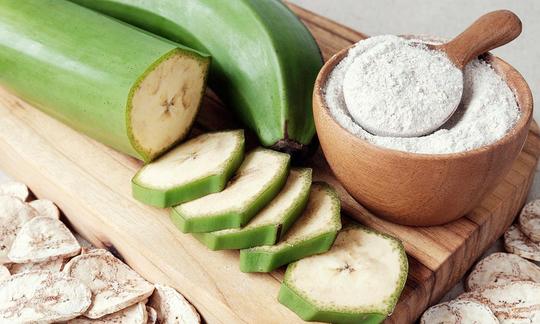

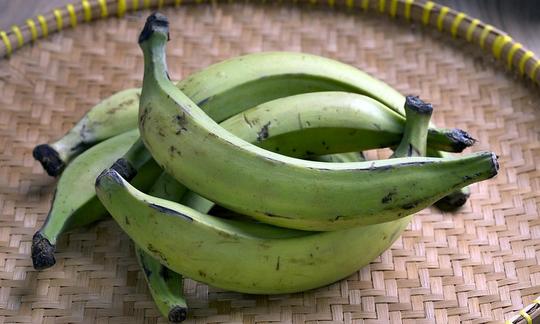

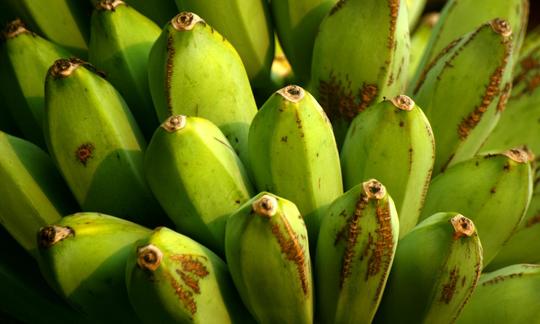

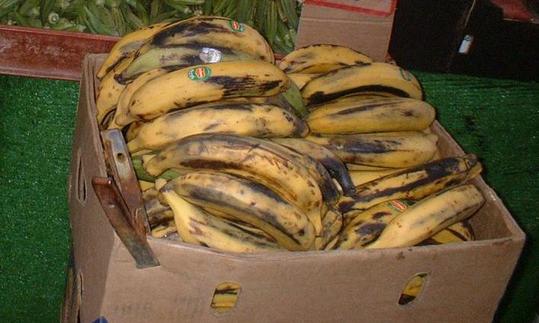

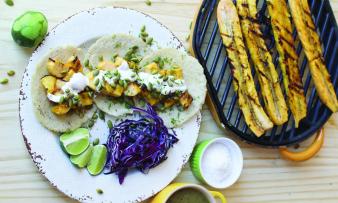
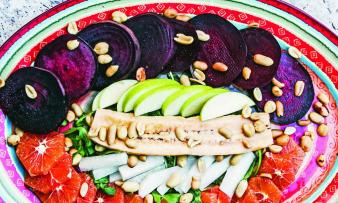





Comments